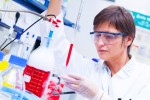The field of regenerative medicine is breaking new ground every day. Doctors and researchers all over the world are shifting from just managing symptoms to exploring the possibility of actually healing and rejuvenating the body. Stem cell therapy is being researched for its potential to cure blood disorders, diabetes, cancer, heart disease, and many other diseases.
Several stem cells sources are currently being examined for safety and effectiveness. While stem cells can come from many different places in adults and embryos, finding stem cells that will perform in the ways desired without triggering an immune system response in the recipient has proven a delicate challenge.
Stem cells for organ healing and rejuvenation can come from a donor or directly from the patient (autologous). Autologous stem cells come from the person to whom they will be administered, often after some manipulation to make them behave in the desired way.
Autologous stem cells can be harvested from many places, including the bone marrow and several of the organs. One of the most versatile sources of autologous stem cells is adipose tissue.
Turning Waste Into Wealth
Adipose tissue is the fat cells of the body. This tissue is an abundant source of stem cells and adipose stem cells are particularly well suited for research and therapy. The other most popular source of autologous stem cells is bone marrow, because of the ability of bone marrow stem cells to differentiate into a variety of specialized cells. But harvesting bone marrow is an invasive operation that may present other complications.
Adipose stem cells are proving to be extremely similar to bone marrow stem cells (BMSCs) in their malleability and ease of acceptance by the body. And unlike BMSCs, adipose tissue stem cells can be extracted through minimally invasive liposuction or cutting of the subcutaneous layer under only local anesthesia. Adipose stem cells are also much more abundant throughout the body than BMSCs. This translates into a greater success rate for transplants, since the higher the number of available stem cells, the greater the likelihood that they will inspire rejuvenation.
Adipose stem cells are more easily accepted by the body than many other types of stem cells, and are not as likely to cause graft-vs-host disease in transplants.
Adipose stem cells can even be derived from fat that is extracted for health and cosmetic related liposuction procedures, turning what would otherwise be biological waste into a potentially life-saving medicine.
Autologous Adipose Stem Cells for Rejuvenation
Adipose stem cells have the ability to differentiate along many different lineage pathways. In laymans terms, that means that they can be used to create many different types of cells. This high plasticity is very promising for the future of regenerative medicine.
Adipose stem cells can be induced to become bone, neural, skin, cardiac, and many other types of cells. This means they can be used for treating and potentially healing brain and spinal cord injuries, severe burns, heart disease, diabetes, bone disorders, osteoarthritis, and many forms of cancer. They also support the development of new, healthy blood cells and correcting genetic disorders.
Adipose stem cells are highly suitable for rejuvenation purposes because they are designed to reproduce rapidly when triggered. The turnover rate for human fat cells is between 6 and 15 months. As a survival mechanism, fat cell production is designed to kick into high gear in case of famine, pregnancy, changes in diet and exercise, climate change, or other dramatic shifts a person might encounter. This high rate of reproduction makes adipose stem cells ideal for catalyzing renewal in other parts of the body.
Adipose stem cells are being used for joint repair and rejuvenation, breast reconstruction post lumpectomy, managing and healing of diabetic ulcers, and cosmetic procedures. Early studies indicate that they may prove very useful for healing type II diabetes, heart disease, stroke, and emphysema.
Adipose stem cells must be triggered to make them actively reproduce, or to produce new cells. Under normal conditions they are dormant unless activated by some internal or external pressure such as a sudden increase in calorie intake or hormonal shift. Researchers have found that adipose stem cells are most effective in transplants where they are injected with growth mediums and other supportive elements.
Stem cell therapy has the potential to transform our entire way of being. It is creating the possibility that diseases that are incurable now could someday be healed. In some instances, researchers are able to use cells that would otherwise be a waste product to help the body regenerate and rejuvenate.
What was seemingly impossible a few decades ago is inching its way into conventional medicine. Stem cell therapy using autologous adult adipose stem cells is proving that it is possible to heal the body. Perhaps one day soon instead of slowly decaying in our golden years, we will have the health and vitality to continue to thrive as we age.













